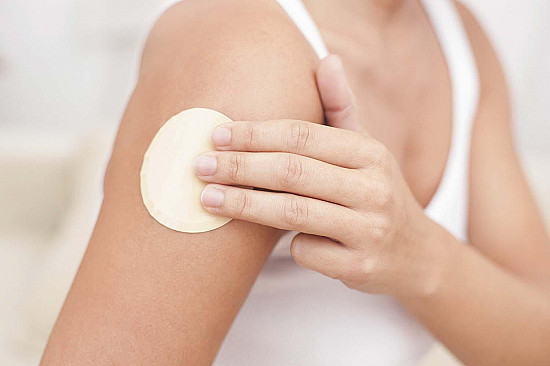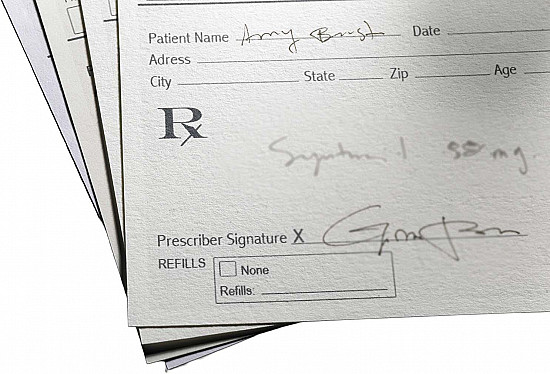Understanding hormone therapy for menopausal symptoms
Here's what to consider before starting hormone therapy for menopausal symptoms.
- Reviewed by Deborah Kwolek, MD, FACP, FAMWA, MSCP, Editorial Advisory Board Member, Harvard Health Publishing

Although some women breeze through menopause, others have symptoms that persist for years. A report from the Study of Women’s Health Across the Nation, or SWAN, a long-term study of women of different races and ethnicities who are in the menopausal transition, found that up to 80% of women experience symptoms such as hot flashes, night sweats, and heart palpitations, and that those symptoms in some cases last more than eight years. Other common symptoms are sleep disruptions, an increase in depression and anxiety, vaginal dryness, and pain during sex. Hormone therapy (HT) can help with many of these problems.
What is hormone therapy?
Hormone therapy is available in different forms, including pills, patches, gels, sprays, and vaginal rings that work systemically (throughout the body). If you primarily have urinary problems or vaginal symptoms such as dryness, burning, and pain during sex, then estrogen creams, vaginal inserts, and other local treatments may be sufficient.
How hormones can help
If you’re plagued by hot flashes, nothing delivers more effective relief than systemic HT, which typically entails taking estrogen and progesterone/progestin. If you have a uterus, you need to pair estrogen with progesterone/progestin or a selective estrogen receptor modulator (SERM) to protect against abnormal thickening or cancer of the uterine lining. There are many ways to get this combo. For instance, you might use an estrogen patch and pair it with an IUD that contains progestin, opt for an oral pill that contains both estrogen and progestin, or take the medication Duavee, which includes estrogen as well as a SERM.
When systemic HT is started within six to 10 years of menopause, it also protects against bone loss and lowers heart disease risk. Both systemic and local HT can help with urinary symptoms (such as urinary tract infections) and make sex more comfortable, too. Some women use a systemic form as well as a local one.
Topical estrogen therapy for vaginal and urinary symptoms
Low-dose vaginal estrogen can reverse tissue thinning, dryness, and other age-related changes of the vagina and urinary tract (genitourinary syndrome of menopause, or GSM) without significantly increasing blood estrogen levels. Although the package inserts for these products currently describe the same risks as for systemic hormonal medications, the risks are in fact much lower since only minimal amounts of hormone are absorbed into the bloodstream. Breast cancer survivors who used it for five years had no increased risk of recurrence, according to a 2023 study published in Obstetrics & Gynecology. There are three types of vaginal estrogen:
- cream: small amount of cream inserted into the vagina and on external genitalia
- ring: small ring inserted into the vagina
- tablet: small tablet inserted into the vagina.
What are the risks and side effects of hormone therapy?
Common side effects of HT include breast tenderness, nausea, and spotting. Taking hormones may have serious adverse effects for some women, which vary depending on age when starting hormones, underlying risk factors, how it’s taken, medications prescribed, and duration of use. These may include an increased risk of blood clots, stroke, and breast cancer. Transdermal estrogen (patch, gel, spray, and vaginal ring) is lower risk than pills.
You should know that existing evidence does not support using HT for the purpose of preventing dementia, hair loss, or weight gain.
Who should avoid hormone therapy?
Although the risk of serious problems is small, it’s worth discussing them with your doctor. Your doctor will likely advise you not to use systemic HT if you have breast cancer, uterine cancer, unexplained uterine bleeding, liver disease, a history of blood clots, or cardiovascular disease.
Should you consider bioidenticals?
Some people use the term “bioidentical” to refer to HT products that are prepared at compounding pharmacies according to a clinician’s prescription, but that’s not right. Bioidentical simply means that hormones have the same chemical and molecular structure as those that are naturally produced in the body.
Despite advertising claims, there is very little medical evidence that bioidenticals are better for you than non-bioidentical hormones. But if you prefer bioidenticals, there are several FDA-approved options to pick from. These are made from the same ingredients and by the identical suppliers that the compounding pharmacies use.
HT products from compounding pharmacies are risky. They don’t undergo the scrutiny and clinical testing required for approval by the FDA, so they don’t come with the same guarantees of dose and purity. Additionally, many compounding pharmacies produce hormone pellets, which are inserted under the skin. Pellets carry a higher risk of side effects compared to other forms of HT, in part because the dose can’t be easily adjusted.
Who is a good candidate for hormone therapy — and who should avoid it?
The North American Menopause Society says that “the benefits of hormone therapy outweigh the risks for most healthy women [with bothersome symptoms] who are aged younger than 60 years and within 10 years of menopause onset.” However, deciding to use HT is a personal choice, and one that should be informed by a thorough discussion with your doctor. The severity of your symptoms, your personal health history, and whether or not other strategies (such as turning down the thermostat and using vaginal moisturizers and lubricants) have provided sufficient relief should all factor in.
If you decide to use HT, you should plan to review continued use with your doctor annually.
Non-hormonal alternatives
In 2023, the FDA approved fezolinetant, the first nonhormonal drug designed to reduce hot flashes. If you take it, your doctor should monitor your liver function with blood tests because fezolinetant can cause rare but serious liver injury. A similar drug called elinzanetant has shown promising results in late-stage clinical trials.
Other nonhormonal prescription drugs used to treat hot flashes include certain antidepressants, blood pressure medications, some antispasmodic drugs, and drugs that treat nerve pain. Antidepressants may be used solely to treat hot flashes, or they may do double duty and treat depression as well. Brisdelle is the only antidepressant that’s FDA-approved to treat hot flashes; it contains the same drug found in Paxil, but at a lower dose. Other antidepressants, including escitalopram or desvenlafaxine, can also be effective for hot flashes.
About the Reviewer

Deborah Kwolek, MD, FACP, FAMWA, MSCP, Editorial Advisory Board Member, Harvard Health Publishing
Disclaimer:
As a service to our readers, Harvard Health Publishing provides access to our library of archived content. Please note the date of last review or update on all articles.
No content on this site, regardless of date, should ever be used as a substitute for direct medical advice from your doctor or other qualified clinician.















